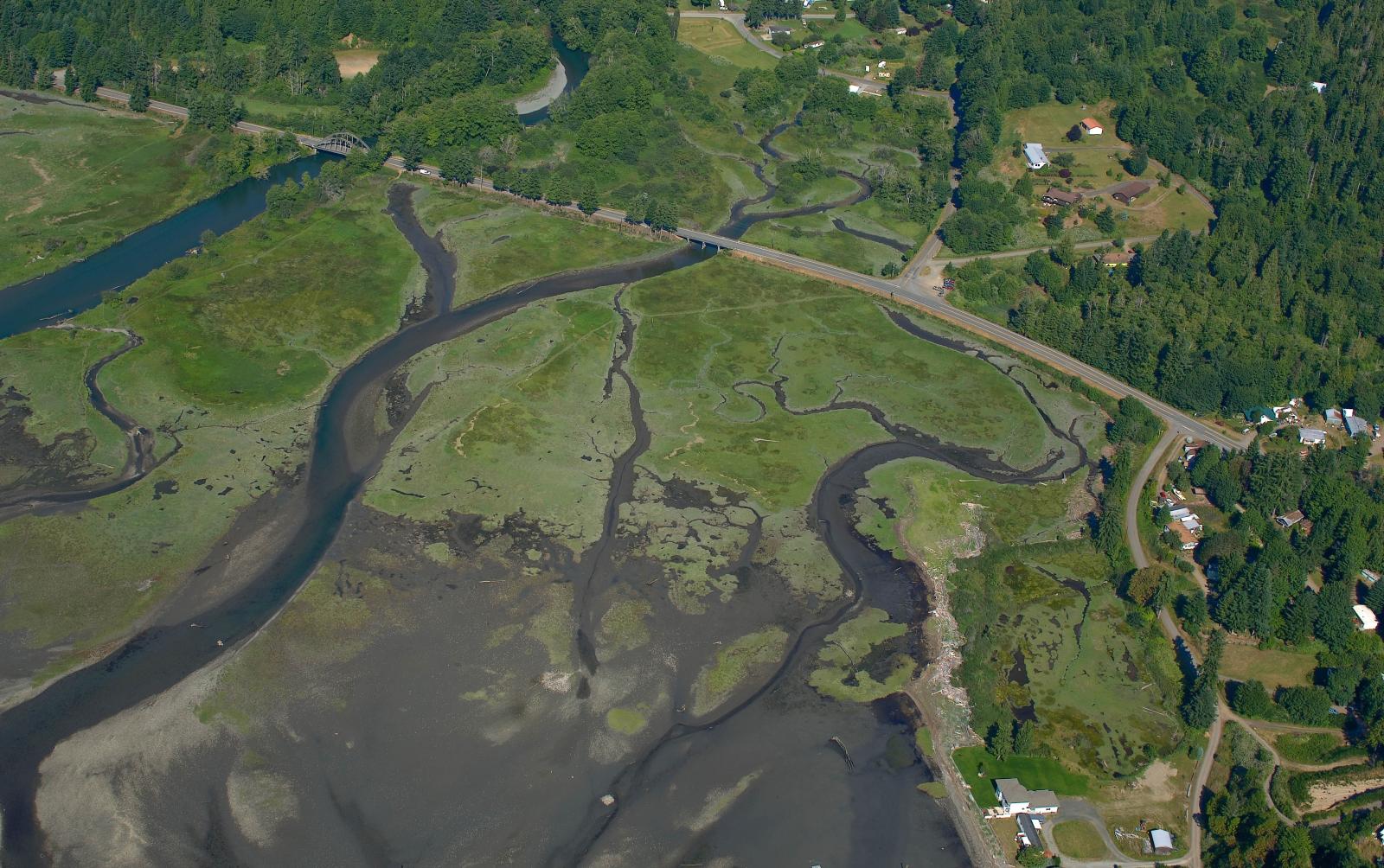Photos
Click to display full size or right-click to save to your device.
News release April 22, 2024
Media Contacts:
WDFW, Ben Anderson, 360-902-0045
USACE, Dallas Edwards, 206-764-3464
WSDOT, Cara Mitchell, 360-357-2703
HCSEG, Alexandra Ehrich
In-person open house scheduled for Saturday, May 4, in Brinnon
BRINNON — The public is invited to learn more about the Duckabush Estuary Restoration Project in Jefferson County at an in-person open house Saturday, May 4, in Brinnon.
The Washington Department of Fish and Wildlife (WDFW) is hosting the open house to provide an update on the restoration project and answer questions. The project will reconnect the Duckabush River to neighboring floodplains and wetlands by modifying local roads, elevating U.S. 101 to an estuary-spanning bridge, and reconnecting historical tidal and river channels.
WDFW is partnering with the U.S. Army Corps of Engineers (USACE), Washington State Department of Transportation (WSDOT), and Hood Canal Salmon Enhancement Group (HCSEG) on the project.
Duckabush Estuary Restoration Project open house information
When: 10 a.m. to 12 p.m. Saturday, May 4
Where: Brinnon Community Center, 306144 U.S. 101
Details: Attendees are welcome to drop in anytime during the two-hour open house to visit stations detailing various elements of the project. Representatives from WDFW, USACE, WSDOT, and HCSEG will be available to answer questions.
Project details
The project will reconnect estuary and freshwater tidal wetlands, reconnect the river to side channels, and restore mudflats and salt marsh. This work will benefit fish and wildlife, including Endangered Species Act-listed Hood Canal summer chum salmon.
Final design is expected by late 2025, and construction is expected to take approximately four years once funding is secured. WDFW, USACE, WSDOT, and HCSEG worked with tribes, county governments, and conservation organizations on the preliminary design.
Work will involve a new 1,614-foot-long bridge across the estuary and a redesigned intersection, including a left-turn lane from northbound U.S. 101 to Duckabush Road. The modernized highway design will meet current safety standards.
Along with habitat benefits, this project will improve water quality and help reduce seasonal flooding impacts. It will also provide public parking to access the Duckabush Wildlife Area including sites popular for shellfish gathering and bird watching, culvert replacements for fish passage, and a wildlife crossing under the highway to improve habitat connectivity and reduce collisions between wildlife and vehicles.
Visit wdfw.wa.gov/duckabush for project details and updates.
WDFW manages more than a million acres of land and hundreds of water access areas throughout the state. By actively managing lands, restoring habitats, and preserving wild places, the Department serves as stewards for Washington’s natural places, protecting the state’s land and water for its human and wildlife populations.
The Seattle District of the U.S. Army Corps of Engineers delivers world class engineering solutions to the Pacific Northwest, the Army and the Nation in order to ensure national security, environmental sustainability, water resource management, and emergency assistance during peace and war.
WSDOT keeps people, businesses and the economy moving by operating and improving the state's transportation systems. To learn more about what we're doing, go to www.wsdot.wa.gov/news for pictures, videos, news and blogs. Real time traffic information is available at wsdot.com/traffic.
HCSEG is one of 14 regional fisheries enhancement groups actively assisting Washington State in salmon recovery efforts. With the help of donors, volunteers, members, and staff, HCSEG conducts habitat restoration and research projects and environmental education programs throughout the entire Hood Canal Watershed that not only benefit local salmon populations, but also support the ecological diversity and sustainability of our local communities. HCSEG strives to deepen the connection between land, people, and salmon through research, restoration, and education. Our mission is to ensure that wild salmon are once again abundant in the Pacific Northwest.
